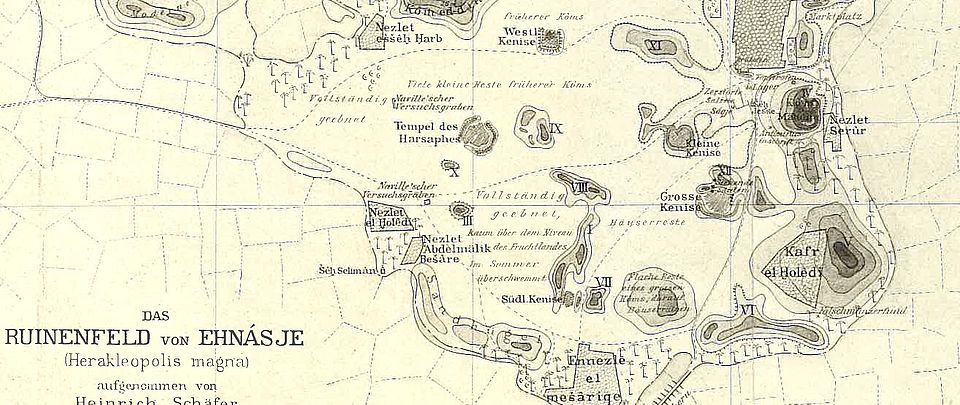
Heracleopolis Magna
Heracleopolis was a very old town and once the capital of Egypt in the First Intermediate period. Owing to its strategic location at the crossroads of the Delta, the Fayyum, and Nile valley, successive rulers of ancient Egypt sought to establish control over it. As an important nome metropolis, this city presents an intriguing case-study for the transition of Egyptian towns from the Roman to the late antique period, with an eye also to the Ptolemaic past.
Objectives
- Pursue the comprehensive collection and analysis of source materials from the site of Heracleopolis, relying on the expertise of the second postdoc for material culture.
- Development of an on-line prosopographical tool based on the Trismegistos People relation database for Heracleopolis (846 people for the Roman and late antique periods).
- Writing of an urban biography, which adequately captures the difference between this city and other nome capitals of middle Egypt.
Sources and datasets
Heracleopolis Magna presents a different, and more limited, evidentiary profile: only a handful of literary texts and ancient book fragments have been preserved. Documentary papyri (almost exclusively in Greek) on the other hand, are substantial, with around 130 texts for the period from 100 to 400 CE. A substantial amount of Roman-period papyri were found during German excavations on the site, but they unfortunately burnt down in the harbour of Hamburg in 1899. A substantial amount of these texts, however, has been published.
Methodology
As for Antinoopolis, the methodology for Heracleopolis will move from clusters of evidence to evocative case-studies that also speak to wider transformations in Egypt and the Roman world. In contrast to the monograph on Antinoopolis, the thesis on Heracleopolis will analyze fewer case-studies, such as the money loans from municipal officials to nome villagers attested in a group of contracts from the late second and early third centuries, but will also discuss the legacy of the Pharaonic and Ptolemaic town, visible, for example, on the structure of the temple of Herishef. Data collected by other team members from land surveys, archaeological excavations, documentary sources and geographical and environmental evidence will be essential to this study and be placed in open access via the on-line urban archive, comprised of a prosopography, gazetteer, and chronicle of urban life. The goal is to put texts back into their archaeological context and so reconstruct in greater detail the urban landscape of Heracleopolis for the Roman and later Roman periods.
